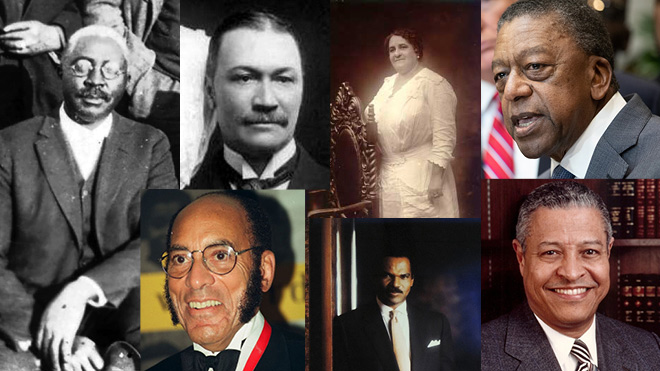
The Financial Significance of Juneteenth
As we celebrate the freedom of Black Americans, we're also reflecting on the financial inequities and barriers to wealth faced by Black people throughout the nation's history.
Freedom is central to the story of the United States. Americans are legally entitled to freedom of religion, freedom of speech, a free press, and the freedom to assemble peaceably, according to the U.S. Bill of Rights, ratified in 1791.
But those freedoms didn't begin to apply to Black people for many years after the nation was founded, and oppressive systems and structures exist to this day.
With the BECU blog's focus on financial health, we thought Juneteenth was a good time to reflect on some of the significant historical events that created long-lasting barriers to Black financial health and wealth.
More Than 400 Years of Enslavement
The enslavement of Black people is often thought to have started in 1619, when a privateer brought 20 captive Africans to the British colony of Jamestown, Virginia. Historical records, however, suggest Africans were captured and enslaved in the Americas as early as the 1400s, and brought to the part of North America that would become the United States as early as 1526.
For more than 400 years, the U.S. economy and white Americans' wealth — in some cases, enormous wealth — were built with the unpaid labor of the Black people they enslaved.
The Emancipation Proclamation, signed in 1863 during the American Civil War, ordered the release of enslaved people in the Confederate South. But the timeline and path were slow and brutal for the four million enslaved people to whom freedom was promised.
Not all enslavers followed the new proclamation. It wouldn't be until June 19, 1865, two and half years after the proclamation was issued, when Union troops arrived in Galveston, Texas, to take control of the state and finally announce the freedom of enslaved people. We celebrate that day as Juneteenth.
"In many ways, Juneteenth represents how freedom and justice in the U.S. has always been delayed for Black people," wrote P.R. Lockhart in Vox.
Both houses of Congress passed the 13th Amendment to the U.S. Constitution in 1865, officially abolishing slavery.
Although Black people were legally free, their release didn't immediately come with other rights, protections or resources to ensure their survival, much less their success.
"The abolition of slavery created a huge humanitarian crisis in the South," said Karlos K. Hill in this Vox video. "Suddenly, 4 million people have very little means to take care of themselves, to support themselves, and do so in a really, really hostile environment."
Black Codes and Jim Crow Laws
During Reconstruction, the period following the Civil War, Southern states enacted Black codes that restricted the kinds of work Black people could do and required them to sign labor contracts with landowners. The penalty for refusing to sign or complete a contract was beating, arrest and unpaid labor. Those who were arrested were often sent to labor camps where they were treated as enslaved people.
By the 1880s, segregation laws, called Jim Crow laws, expanded, limiting where Black people could go, where they could live, and their access to services and resources. White water fountains, restrooms, building entrances and waiting areas were off limits to Black people. Black people also couldn't live in white neighborhoods or attend white schools.
Meanwhile, white landowners continued to amass wealth and pass it on to their heirs.
Attacks on Black Wealth and Progress
In addition to oppressive laws and policies, deadly violence was used to stamp out Black progress.
In the summer of 1919, following the end of World War I, racist attacks broke out in Washington, D.C., and spread across the country in what is known as The Red Summer. Fearing that Black people, especially Black war veterans, wouldn't tolerate and abide by segregation any longer, white people lashed out.
The Great Migration was also happening at that time: About a million Black people were fleeing segregation in the South and pursuing greater economic opportunities in the North. Fears that Black people were taking over the jobs and housing to which many white people felt entitled sparked deadly violence.
"Between April and November of 1919, there would be approximately 25 riots and instances of mob violence, 97 recorded lynchings, and a three-day-long massacre in Elaine, Arkansas, during which over 200 Black men, women, and children were killed after Black sharecroppers tried to organize for better working conditions," wrote Abigail Higgins in this History.com article.
The Tulsa Race Massacre of 1921 is another example of a direct attack on Black wealth. A white mob attacked Greenwood, Oklahoma, near Tulsa, an area that had become a thriving center of Black prosperity. Known as Black Wall Street, Greenwood included law offices, medical practices, luxury shops, restaurants, movie theaters, barbershops and salons. It had its own school system, post office, bank and bus service.
Michelle Place, executive director of the Tulsa Historical Society and museum, told History.com: "It is said within Greenwood every dollar would change hands 19 times before it left the community."
The attack on May 31, 1921, is still considered one of the worst acts of racial violence in U.S. history. Hundreds of Black residents were killed, and 1,000 houses were destroyed in just 18 hours.
Restrictions on Property Ownership
Land ownership is one of the most common ways to build wealth in America, but opportunities for Black people to own property and build wealth from equity have been blocked or limited for much of U.S. history.
When the Civil War ended, the federal government confiscated land from Confederate landowners and, by Special Field Order No. 15, granted 40 acres and a mule to thousands of formerly enslaved Black people. This was intended to be a way for Black people to provide for themselves and start working toward financial independence. But President Andrew Johnson reversed the order on April 14, 1865, just three months after it had been issued, and the land was returned to Confederate landowners.
The practice of sharecropping became prominent. Black people rented small plots of land that they would work themselves and give a portion of their harvest to the landowner.
History.com editors wrote in an article about sharecropping: "Some Blacks managed to acquire enough money to move from sharecropping to renting or owning land by the end of the 1860s, but many more went into debt or were forced by poverty or the threat of violence to sign unfair and exploitative sharecropping or labor contracts that left them little hope of improving their situation."
In the 1930s, redlining policy was born: The federal government sought to address the housing shortage at that time by providing suburban housing to white families and pushing Black families into urban housing projects. The Federal Housing Administration refused to insure mortgages in and near Black neighborhoods while subsidizing developments for whites only. The government created a grading system, largely based on race, to evaluate neighborhoods' mortgage lending risk. Neighborhoods where people of color lived were marked in red on maps to indicate the highest risk.
Richard Rothstein, author of "The Color of Law," said in an interview about how public policy led to the formation of segregated cities that after World War II, the federal government intensified efforts to move middle-class white families into all-white suburbs. From the 1940s to 1968, when the Fair Housing Act was passed, the value of suburban homes increased substantially and well beyond the reach of what Black families could afford.
Rothstein explained the effects of redlining: "The white families who bought these homes ... gained wealth from the appreciation of the value of their homes," Rothstein told Dionissi Aliprantis of the Federal Reserve Bank of Cleveland. "African Americans were prohibited by explicit federal policy from participating in this wealth generating program."
The U.S. tax structure magnifies the racial wealth gap, according to the Center on Budget and Policy Priorities. That's because wealth (money and property already owned and earning interest) isn't taxed as heavily as income from work (wages, salaries and employer-provided benefits).
An analysis by ProPublica that showed the 25 richest Americans pay little, and sometimes nothing, in federal income taxes while their wealth continues to grow.
Voting Rights
The 15th Amendment to the U.S. Constitution granted Black men voting rights in 1870, but, with the end of Reconstruction in the late 1870s, many Southern states enacted laws that effectively reversed the rights the 15th Amendment granted, along with citizenship rights granted by the 14th Amendment.
For decades, segregation, poll taxes, literacy tests, intimidation and violence were used to block Black people from voting. Not being able to participate in the democratic process meant their needs weren't represented. Lawmakers continued to enact laws that left out Black people and kept power and wealth concentrated among white men.
The Voting Rights Act, signed into law in 1965, 95 years after the adoption of the 15th Amendment, was intended to remove barriers to Black voting, but it wasn't well enforced, and, in some cases, it was willfully ignored.
Voter suppression is still an issue, with states enacting laws that make it harder for people to vote. These voter suppression laws disproportionately affect people of color, poor people, young adults and older people.
Path to Equity
Barriers to Black wealth throughout U.S. history have had long-lasting effects. Today, Black families in the U.S. have 9.2 times less wealth than white families, and, according to a report from the McKinsey Institute for Black Economic Mobility, it would take an estimated 320 years to close the gap if the wealth of the average Black family continues growing at the current pace.
Juneteenth is a day to celebrate freedom that began for Black Americans 159 years ago on June 19. That day was the beginning of a long process, and more work remains before access to freedom is truly equal.
The above article is intended to provide generalized financial information designed to educate a broad segment of the public; it does not give personalized financial, tax, investment, legal, or other business and professional advice. Before taking any action, you should always seek the assistance of a professional who knows your particular situation when making financial, legal, tax, investment, or any other business and professional decisions that affect you and/or your business.


